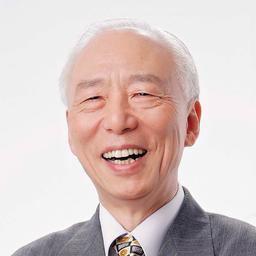Reading and performing other tasks requiring visual acuity becomes more of a challenge beginning around the age of 40. Vision, when no longer crisp and clear, causes eye strain and, potentially, headaches, and seeing things up close becomes difficult. These symptoms may indicate the onset of presbyopia.
- Clearer vision when objects are held at a greater distance.
- Difficulty reading books and magazines due to blurred vision.
- Headaches and drowsiness after short periods of reading.
- Difficulty seeing in dimly lit areas.
- Eye fatigue and discomfort.
Why Do People Develop Presbyopia?
In the eye, there is a structure called the crystalline lens, responsible for regulating the ability to focus on objects at varying distances. Surrounding the lens is a ring of ciliary muscles. When these muscles contract, the lens becomes thinner, allowing for distant vision. When the ciliary muscles relax, the lens thickens, enabling close-up vision.The commonly accepted cause of developing presbyopia includes the loss of the crystalline lens’s ability to adjust its thickness. One reason for this is the loss of elasticity in the ciliary muscles, which prevents them from contracting to accommodate distant vision and relaxing for close-up vision. The inability to regulate the thickness of the crystalline lens results in the loss of the ability to focus on objects at varying distances. Another contributing factor is the aging or hardening of the crystalline lens itself, which also leads to the loss of its ability to adjust for near and far vision.
According to the fundamental theory of yin-yang in TCM, all aspects of the natural world exhibit corresponding yin and yang characteristics. These opposing characteristics manifest in various ways, such as the opposition of earth and sky and cold and hot. Yin and yang energies are opposing yet interdependent, and the balance between them is essential. When yin and yang are balanced, individuals enjoy good health, vitality, harmony, and stability. However, when such balance is disrupted, various health issues can arise.

Can Presbyopia Be Reversed?
It can be challenging to reverse presbyopia once it sets in. However, some traditional Chinese medicine techniques may help improve the condition.For example, ear acupuncture could potentially be beneficial for treating presbyopia.
Ear acupuncture can be utilized to stimulate three specific acupoints, which have shown effectiveness in improving a wide range of eye conditions. These acupoints are known as Cervical Spinal Nerve 3, Eye Muscle, and Optic Nerve.
The human body has seven cervical vertebrae, and from the cervical spine, there are eight pairs of spinal nerves known as “cervical nerves.” The third pair of cervical nerves, referred to as “cervical spinal nerve 3,” is associated with vision and extends to the area near the occipital bone at the back of the head, which is the body’s visual processing region.
The ability of the eyes to move in different directions, such as up and down, left and right, and diagonally, is facilitated by a group of eye muscles. These movements are regulated by three pairs of cranial nerves: the third pair (oculomotor nerve), the fourth pair (trochlear nerve), and the sixth pair (abducens nerve). In the practice of ear acupuncture, these three pairs of cranial nerves are collectively regarded as a single acupoint, often referred to as the “Eye Muscle.”
The optic nerve, originating from the posterior part of the retina, is the visual nerve responsible for transmitting visual signals. Within the optic nerve, some of these signals undergo a partial crossover, while others do not. These signals eventually reach the posterior portion of the brain known as the visual processing region, where the brain discerns what the observed objects are.
Stimulating these three acupoints simultaneously can lead to improvements in vision. Unlike conventional traditional Chinese acupuncture techniques, ear acupuncture points automatically adjust to the targeted stimulation parts when needled or pressed with any object. Therefore, it can yield improvements for a wide range of vision issues, such as nearsightedness, farsightedness, and amblyopia (also called “lazy eye”).
What Can We Do to Delay Presbyopia
As we all know, aging is something that, for the most part, is inevitable and cannot be reversed.But is it possible to slow down the aging process to some extent? Certainly, there are steps we can take on our own.
Surrounding the eye sockets are four bony cavities located at the four corners of the orbital bone. These acupoints are known as Yuyao (above the eye), Chengqi (below the eye), Jingming (near the nasal bone), and Tongziliao (close to the temples). Regularly massaging these four acupoints, for example, once in the morning and once in the evening, with each session lasting around 20 minutes, over an extended period, may help slow down the aging process and improve vision.

How to Treat Presbyopia?
Western medicine often views surgery as a more effective approach to treating presbyopia. However, it is important to note that surgery is not a universal solution or a cure—it merely delays the condition. If the condition reoccurs, the opportunity for proper treatment may be lost.In traditional Chinese medicine, both acupuncture and acupressure massage are effective treatments for presbyopia.







